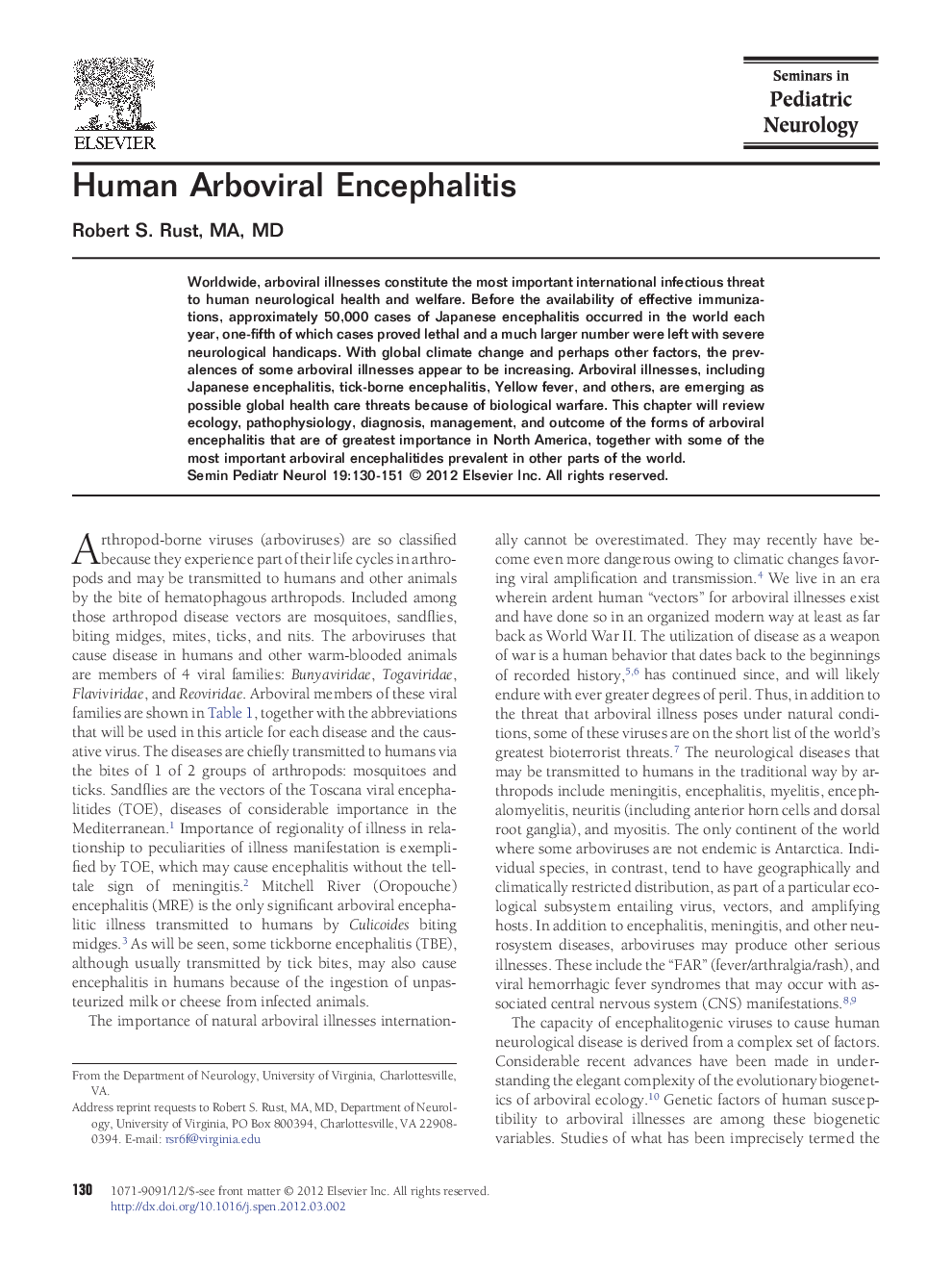| Article ID | Journal | Published Year | Pages | File Type |
|---|---|---|---|---|
| 3090999 | Seminars in Pediatric Neurology | 2012 | 22 Pages |
Abstract
Worldwide, arboviral illnesses constitute the most important international infectious threat to human neurological health and welfare. Before the availability of effective immunizations, approximately 50,000 cases of Japanese encephalitis occurred in the world each year, one-fifth of which cases proved lethal and a much larger number were left with severe neurological handicaps. With global climate change and perhaps other factors, the prevalences of some arboviral illnesses appear to be increasing. Arboviral illnesses, including Japanese encephalitis, tick-borne encephalitis, Yellow fever, and others, are emerging as possible global health care threats because of biological warfare. This chapter will review ecology, pathophysiology, diagnosis, management, and outcome of the forms of arboviral encephalitis that are of greatest importance in North America, together with some of the most important arboviral encephalitides prevalent in other parts of the world.
Related Topics
Life Sciences
Neuroscience
Developmental Neuroscience
Authors
Robert S. MA, MD,
